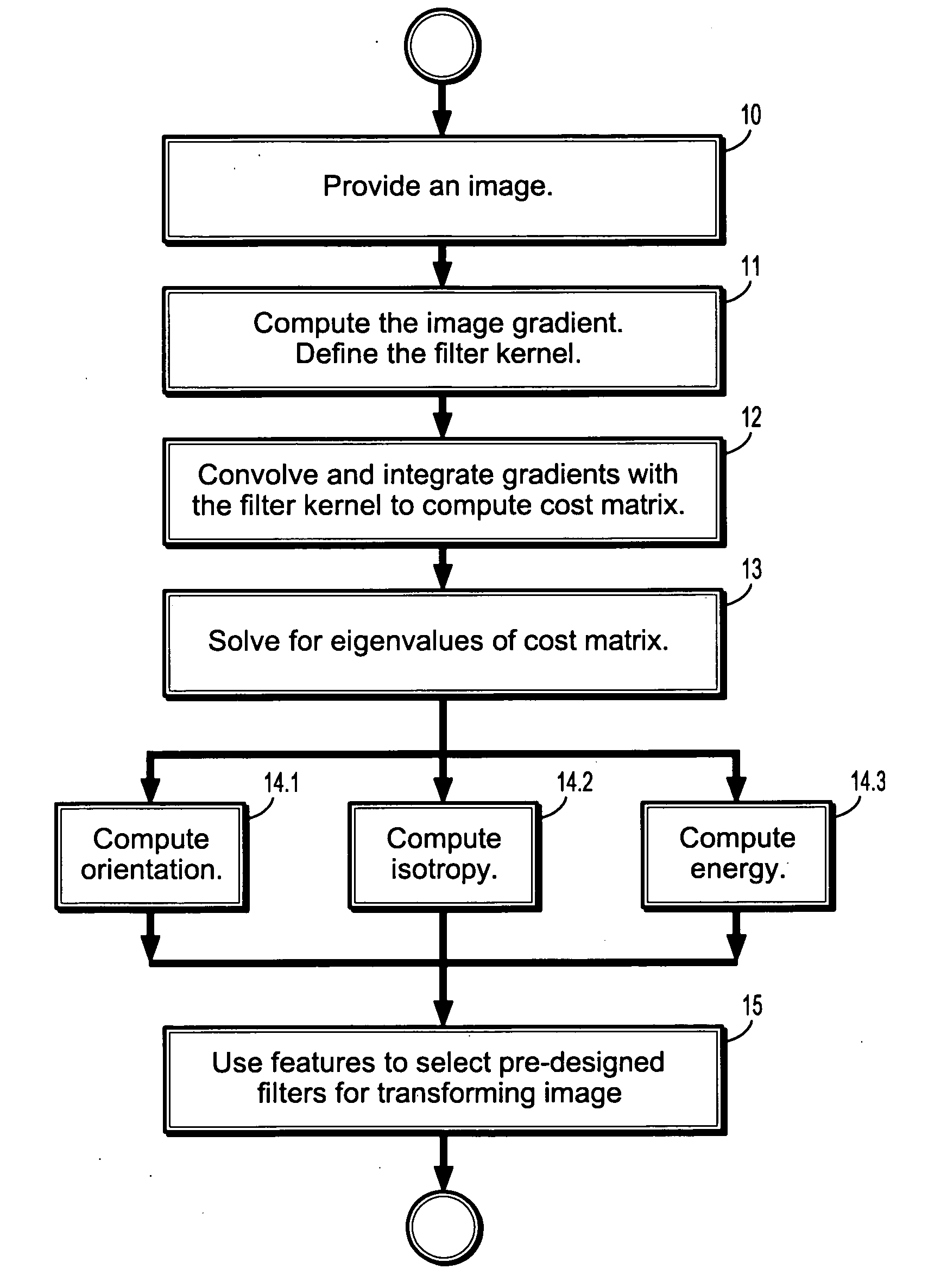System and method for efficient feature estimation for medical images
a feature estimation and image technology, applied in image analysis, image enhancement, instruments, etc., can solve the problems of difficult to distinguish structures from noise, speed bottleneck of any application, and inability to enhance images, etc., to achieve enhanced structures and/or edges, high quality
- Summary
- Abstract
- Description
- Claims
- Application Information
AI Technical Summary
Benefits of technology
Problems solved by technology
Method used
Image
Examples
Embodiment Construction
[0019] Exemplary embodiments of the invention as described herein generally include systems and methods for efficient feature estimation for adaptive filtering algorithms. However, specific structural and functional details disclosed herein are merely representative for purposes of describing example embodiments of the present invention. Further embodiments of the invention may, however, be embodied in many alternate forms and should not be construed as limited to the embodiments set forth herein.
[0020] Accordingly, while the invention is susceptible to various modifications and alternative forms, specific embodiments thereof are shown by way of example in the drawings and will herein be described in detail. It should be understood, however, that there is no intent to limit the invention to the particular forms disclosed, but on the contrary, the invention is to cover all modifications, equivalents, and alternatives falling within the spirit and scope of the invention. Like numbers...
PUM
 Login to View More
Login to View More Abstract
Description
Claims
Application Information
 Login to View More
Login to View More - R&D
- Intellectual Property
- Life Sciences
- Materials
- Tech Scout
- Unparalleled Data Quality
- Higher Quality Content
- 60% Fewer Hallucinations
Browse by: Latest US Patents, China's latest patents, Technical Efficacy Thesaurus, Application Domain, Technology Topic, Popular Technical Reports.
© 2025 PatSnap. All rights reserved.Legal|Privacy policy|Modern Slavery Act Transparency Statement|Sitemap|About US| Contact US: help@patsnap.com



